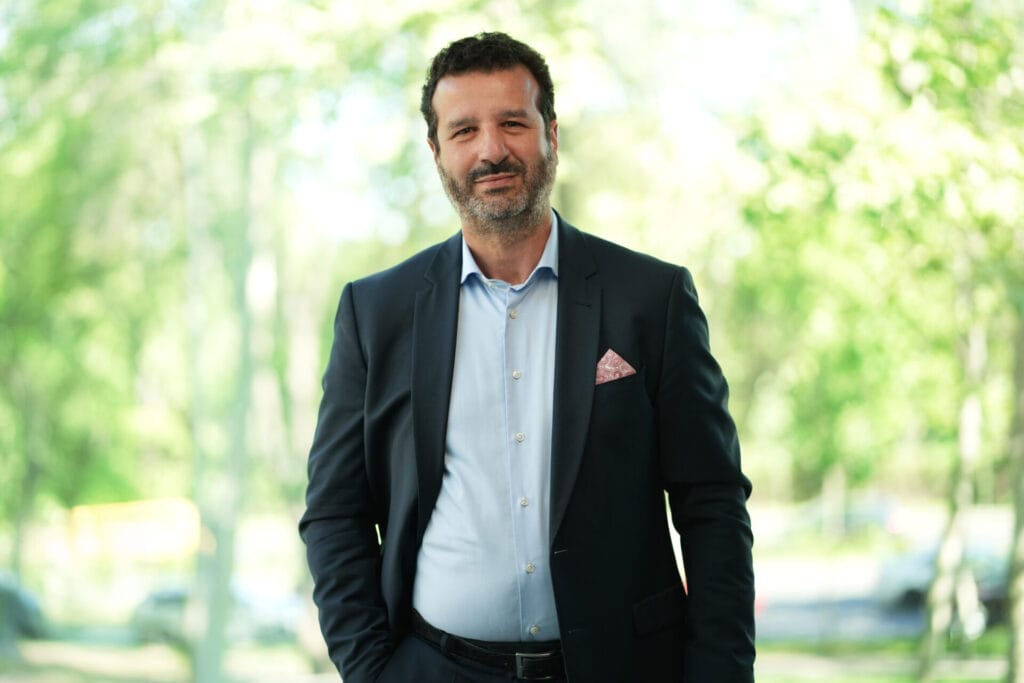Just like the air we breathe or the water we drink, soil needs to be protected.
Strong, rich soil gives life to the entire food chain. It helps plants create nutrients. Healthy soil defends plants from harm. And when properly managed, it can assist farmers in their efforts to help preserve the environment. Soil is the foundation — figuratively and literally — for life as we know it.
On the surface, soil is composed of sand, clay, and silt. When we look closer, however, we find an entire world of microorganisms bringing the ground beneath our feet to life.

Soil hosts a quarter of our planet’s biodiversity. Billions upon billions of earthworms, nematodes, insects, fungi, bacteria, and other invertebrates call it home. Just one handful of soil can contain tens of thousands of different organisms.
These earth-dwelling microbes use the organic material found in soil as food. They work together to break down complex materials — like dead plants and animals — into minerals and nutrients that support healthy growth for the rest of the ecosystem. Essentially, underground organisms aren’t just evidence of healthy soil. They are healthy soil. They create it.
Underground organisms aren’t just evidence of healthy soil. They are healthy soil.
Agriculture is finding new ways to partner with the life below, unlocking the secrets of the soil to protect their environment, and ours.

Using solutions provided by nature
By studying the life that already exists in the soil, scientists are discovering how we can help nature protect a farmer’s fields. One of the ways that we do this is through a deeper understanding of biologicals.
These solutions are derived from naturally occurring microorganisms, plant extracts, or other organic matter. Often described as “probiotics for plants,” biologicals introduce beneficial microbes to the soil to help boost natural processes or defenses. There are three types: biopesticides, biofertilizers, and biostimulants.
Biopesticides help farmers target specific threats while posing minimal risk to other species. For example, there are products that contains active fungal spores that can control the population of nematodes that would otherwise wreak havoc on a farmer’s fruit or vegetable crops. Meanwhile, good bacteria in biostimulants can help jumpstart a plant’s own biological processes. They can increase the activity of photosynthesis and improve nutrient uptake, among other benefits.
By incorporating natural solutions into soil protection, farmers are able to engage in more sustainable farming methods and produce healthier harvests.

Leaving the soil undisturbed
For centuries, farmers plowed their fields as a way to prevent early-season weeds from stealing vital water, sun, and nutrients from their crops. Today, more and more farmers are realizing that disturbing the soil also disturbs the work of vital underground organisms. New crop protection technologies are allowing farmers to control weeds without tilling (plowing), leaving microbes to do their work and giving the farmer a host of benefits.
With reduced tillage strategies, farmers leave behind crop residue from the previous year. Organisms in the soil can then break down the organic matter, producing nutrients to help support future crops. Because the soil is left undisturbed, its ability to absorb and retain water increases. By letting the land rest, farmers reduce erosion and prevent runoff, not to mention maintaining the soil’s natural ability to store carbon. While turning the soil releases CO2 into the atmosphere, no-till practices reduce tractor emissions and actually help farmers keep more carbon underground, where it belongs.
As more farmers adopt practices to protect the soil and the biodiversity within it, they’re realizing these sustainable approaches are good for the farm and the planet.

Protecting microbes for the future
Today digital tools are giving farmers greater access to data, allowing them to grow more efficiently and sustainably. New innovations help farmers use inputs like seeds, fertilizers, pesticides, and water, only where they are needed most. When it comes to soil, this means being able to more accurately care for the land.
Farmers can take advantage of new technology, like drip irrigation. Lines are placed directly in the field, allowing farmers to monitor humidity sensors. These devices scan the soil, gathering information about how much water is needed to sustain crops. Using this data, the system determines whether or not to begin applying water or other field inputs, like biological solutions. Because drip irrigation only activates when the soil needs it, farmers are able to provide the right amount of resources to support life — above and below.
Through these tools, as well as other innovations, farmers are beginning to better understand the soil that their families have been working with for generations. We must always remember the diversity of organisms that make soil “soil.” Because without them, we would have nothing but dirt.















